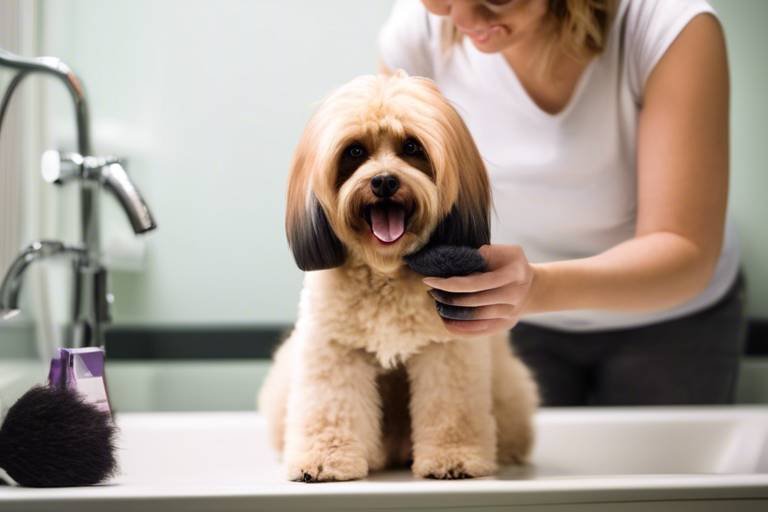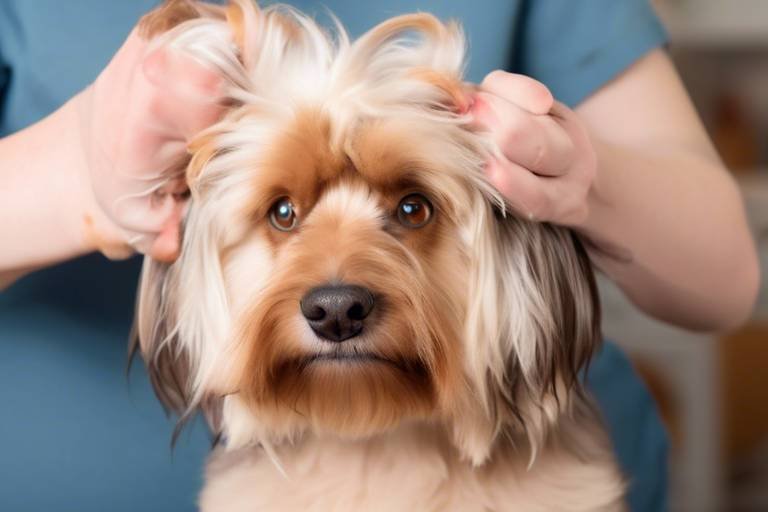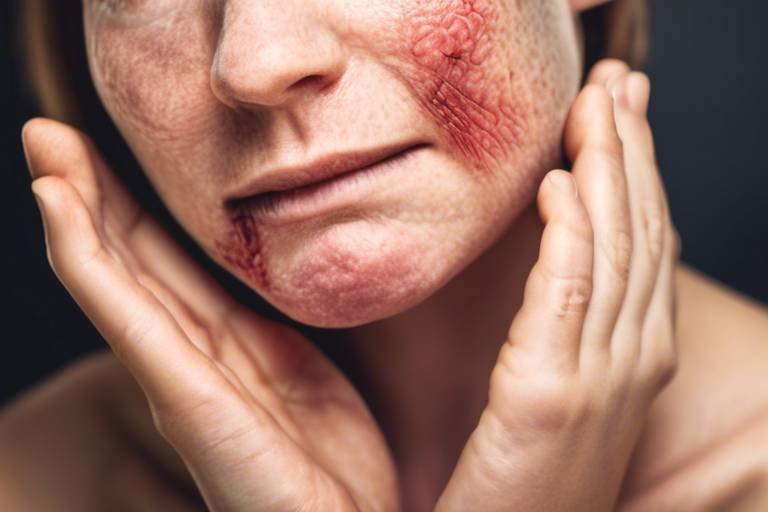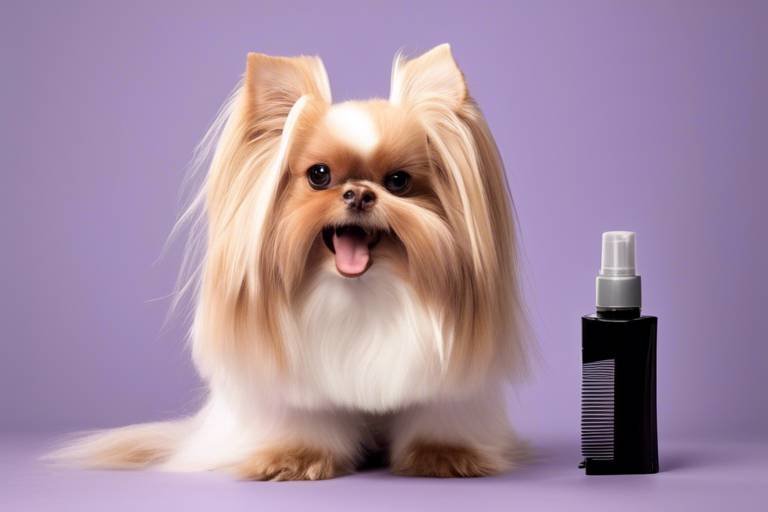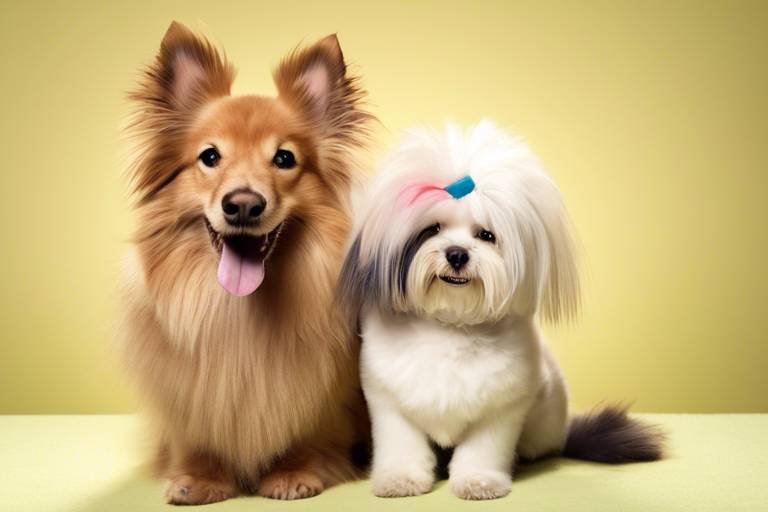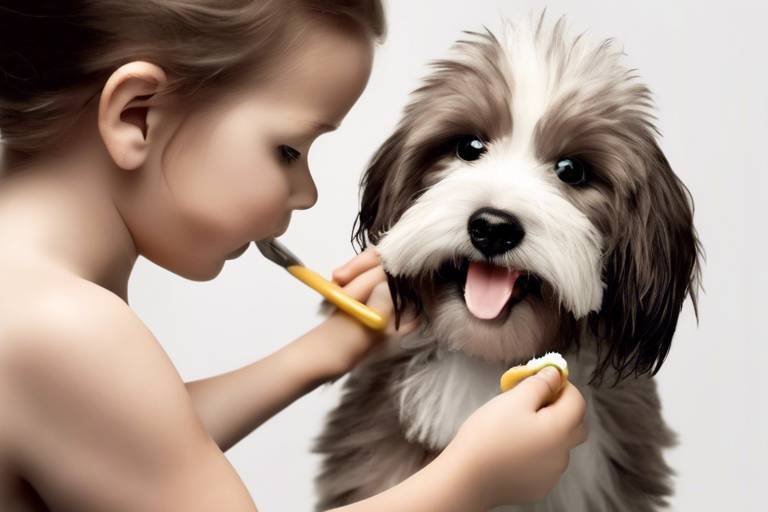The Importance of Grooming for Active Cats
When it comes to our furry companions, grooming is often an overlooked aspect of their care, especially for active cats who are always on the move. You might be wondering, why is grooming so vital? Well, just like a well-tended garden thrives, a well-groomed cat flourishes. Regular grooming not only enhances your cat's appearance but also plays a crucial role in their overall health and hygiene. Think of it as a bonding ritual between you and your feline friend, a time to connect and care for each other.
Active cats love to explore, play, and get into all sorts of adventures, which can lead to a build-up of dirt, debris, and loose fur. This is where grooming comes into play. By establishing a regular grooming routine, you can help your cat maintain a healthy coat and skin, reduce shedding, and prevent matting. Moreover, grooming allows you to check for any unusual bumps or skin irritations that might need veterinary attention. It's like a mini health check-up right at home!
But grooming isn't just about health; it's also about comfort. Imagine wearing a cozy sweater that suddenly becomes itchy and uncomfortable. That's how your cat feels when their coat is matted or dirty. Regular grooming sessions help keep their fur smooth and free from tangles, making them feel more comfortable and happy. Plus, a clean cat is a happy cat! And let’s not forget the added bonus of reducing allergens in your home. Less shedding means less fur floating around, which is a win-win for both you and your cat.
In the following sections, we will delve deeper into the benefits of regular grooming, the right tools to use, and effective grooming techniques that will make the process enjoyable for both you and your active feline. So, grab your grooming supplies, and let’s embark on this journey to keep your cat looking and feeling their best!
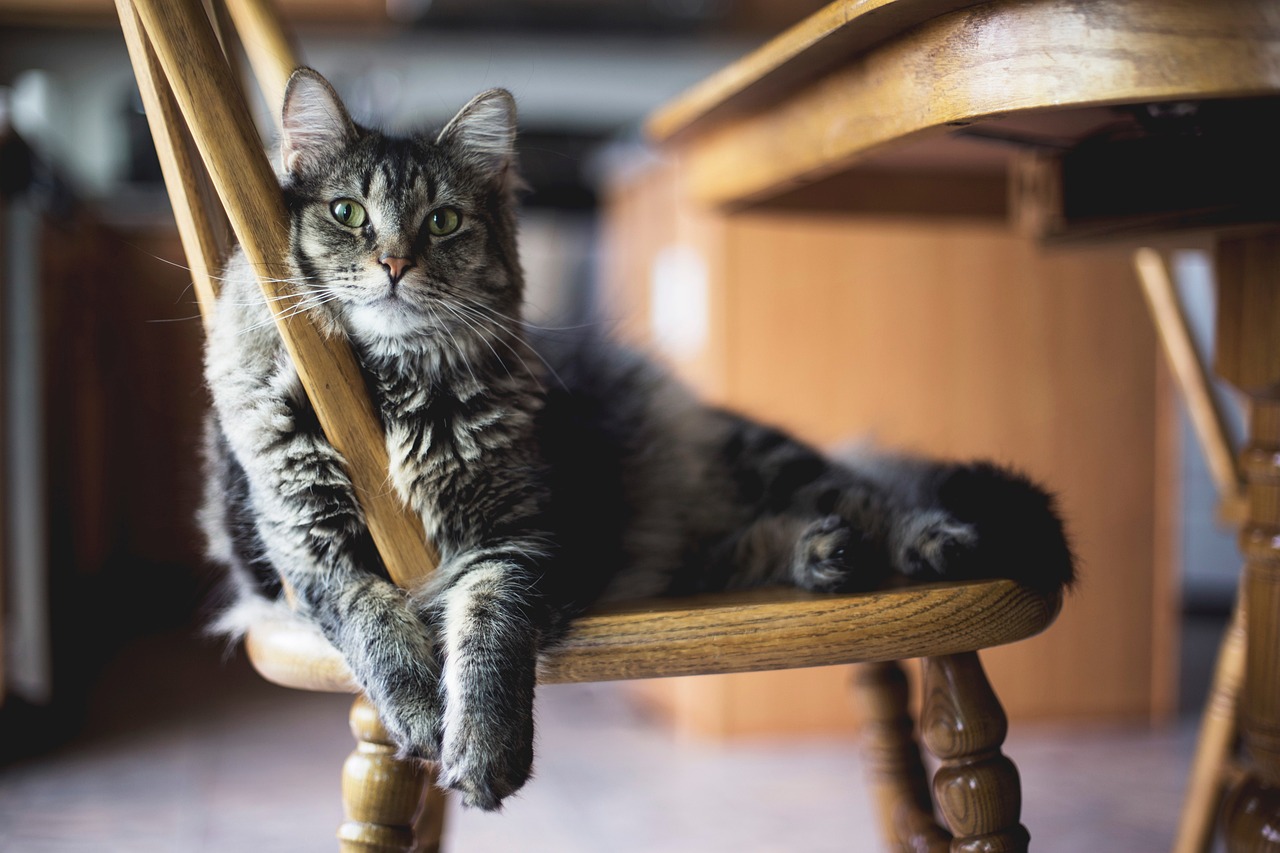
Benefits of Regular Grooming
Regular grooming is not just about keeping your cat looking fabulous; it plays a crucial role in their overall health and happiness. Think of grooming as a spa day for your feline friend, where they can relax, be pampered, and enjoy some quality time with you. By establishing a grooming routine, you can significantly enhance your cat's life in several ways.
One of the most immediate benefits of regular grooming is improved skin health. Just like humans, cats can suffer from skin irritations and conditions. Grooming helps to remove dirt, debris, and dead skin cells, allowing their skin to breathe and remain healthy. It also promotes better circulation, which is vital for maintaining a vibrant coat. When you brush your cat, you're not just removing loose fur; you're also stimulating the skin underneath, encouraging natural oils to be distributed evenly throughout their coat.
Another significant advantage of grooming is the reduction of shedding. Active cats, especially those who love to roll around and play, can shed quite a bit. Regular grooming helps manage this shedding, keeping your home cleaner and reducing the amount of fur on your furniture and clothes. Plus, who wants to constantly vacuum? By grooming your cat regularly, you can minimize the mess and keep your living space more comfortable for both you and your furry companion.
Moreover, grooming helps prevent matting, especially for long-haired breeds. Mats can be uncomfortable and even painful for cats, leading to skin problems if left untreated. By incorporating grooming into your cat's routine, you can easily spot tangles and mats before they become a bigger issue. This proactive approach not only keeps your cat comfortable but also saves you from potential vet visits due to skin irritations or infections caused by neglected grooming.
Lastly, grooming is an excellent way to bond with your cat. It provides a unique opportunity for you to spend quality time together, strengthening your relationship. Cats are creatures of habit, and they thrive on routine. When they know that grooming time is a regular part of their day, they will likely become more comfortable and relaxed during the process. This can lead to a more enjoyable experience for both of you, turning what might seem like a chore into a cherished ritual.
In summary, the benefits of regular grooming extend far beyond aesthetics. It promotes skin health, reduces shedding, prevents matting, and strengthens the bond between you and your cat. So, grab that brush and make grooming a fun and rewarding part of your cat's life!
- How often should I groom my cat? - The frequency depends on your cat's coat type and activity level. Generally, short-haired cats can be groomed once a week, while long-haired cats may need daily grooming.
- What tools do I need for grooming? - The tools vary based on your cat's coat type. Brushes, combs, and grooming gloves are popular choices. Make sure to select the right tool for your cat's specific needs.
- Can grooming help with my cat's anxiety? - Yes! Regular grooming can help your cat feel more secure and relaxed, especially if you use positive reinforcement techniques during the process.
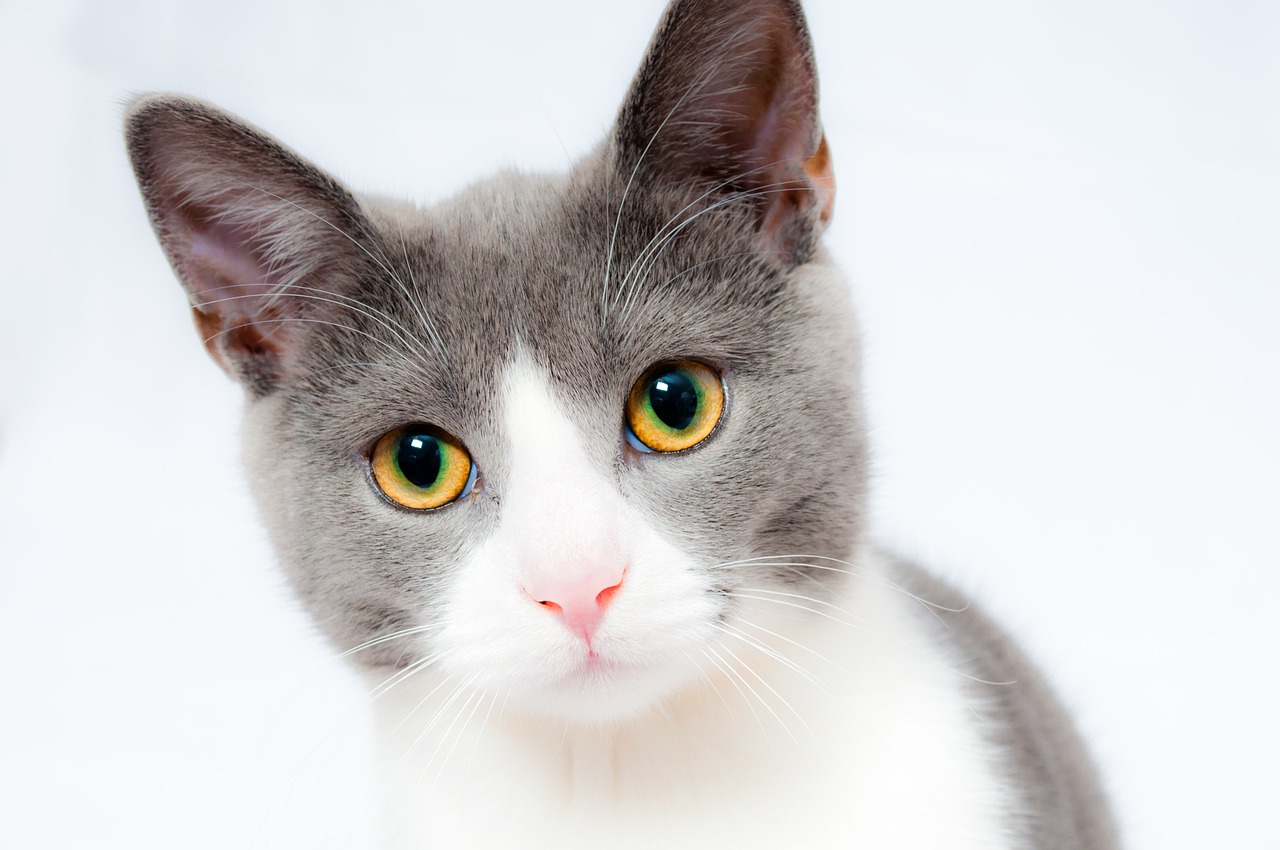
Choosing the Right Tools
When it comes to grooming your active feline friend, choosing the right tools is like selecting the perfect ingredients for a gourmet meal. Each tool has its own unique purpose, and using the right ones can transform grooming from a chore into a delightful bonding experience. Imagine your cat purring contentedly as you brush away loose fur and dirt—it's a win-win situation! So, let’s dive into the world of grooming tools and discover what you need to keep your cat looking and feeling fabulous.
First off, you’ll want to consider the type of coat your cat has. Different breeds come with different grooming needs, much like how a sports car requires premium fuel. Here’s a quick breakdown:
| Coat Type | Recommended Tools |
|---|---|
| Short-Haired | Rubber brushes, bristle brushes |
| Long-Haired | Wide-toothed combs, slicker brushes |
| Curly or Wavy | Undercoat rakes, detangling brushes |
For short-haired cats, a simple rubber brush can work wonders. These brushes not only remove loose hair but also stimulate the skin, promoting natural oil distribution. Think of it as a mini massage that your kitty will love! Meanwhile, long-haired cats require a bit more finesse. A slicker brush is ideal for detangling those pesky mats and preventing them from forming in the first place. It’s like having a personal stylist for your furry friend!
Now, let’s talk about the importance of comfort. Just as we prefer comfortable shoes for a long walk, your cat will appreciate grooming tools that feel good against their skin. Ensuring that the bristles are soft and the handles are easy to grip will make the grooming session smoother and more enjoyable for both of you. A happy cat means a happy owner!
In addition to brushes and combs, you might also want to consider nail clippers and ear cleaners as part of your grooming toolkit. Regular nail trimming prevents painful overgrowth and keeps your furniture safe from those sharp little claws. As for ear cleaning, it helps prevent infections and keeps your cat feeling fresh. After all, a well-groomed cat is a happy cat!
Before you start grooming, it's essential to familiarize your cat with the tools. Just as a child might be apprehensive about a new toy, your cat may be wary of unfamiliar grooming tools. Take the time to introduce each item slowly, allowing them to sniff and explore. This will help them associate grooming with positive experiences rather than fear.
Ultimately, the right tools can make all the difference in your grooming routine. With the proper equipment, you can ensure that your cat’s coat remains healthy, shiny, and free of tangles. So, invest a little time in selecting the right brushes, combs, and other grooming essentials, and watch as your cat transforms into the most stylish feline on the block!
Types of Brushes
This article explores the significance of grooming for active cats, highlighting its benefits for their health, hygiene, and overall well-being, while providing tips for effective grooming practices.
Regular grooming not only enhances a cat's appearance but also promotes skin health, reduces shedding, and prevents matting. Understanding these benefits can encourage owners to establish a grooming routine.
Selecting appropriate grooming tools is essential for effective grooming. Different tools serve various purposes, from brushes to combs, and knowing which to use can make the process easier and more enjoyable.
When it comes to grooming your furry friend, the type of brush you use can make a world of difference. Just like we have different tools for various tasks, cats have unique coat types that require specific brushes to keep them looking and feeling their best. Understanding these types can help you choose the right one for your cat, turning grooming time into a bonding experience rather than a chore.
For instance, short-haired cats often benefit from a simple yet effective brush, while long-haired cats need specialized tools to tackle their luxurious coats. Here’s a quick breakdown of the most common types:
| Brush Type | Best For | Description |
|---|---|---|
| Slicker Brush | Long-haired Cats | Features fine, short wires close together to remove loose hair and mats. |
| Pin Brush | Long-haired Cats | Has round-tipped pins that help detangle fur without hurting the skin. |
| Rubber Brush | Short-haired Cats | Great for removing loose hair and massaging the skin, perfect for short-haired breeds. |
| Bristle Brush | Short-haired Cats | Ideal for distributing natural oils and giving a shiny finish to the coat. |
Each of these brushes serves a unique purpose, allowing you to customize your grooming routine based on your cat's needs. For example, if you have a long-haired cat, a slicker brush is essential for tackling those pesky mats that can form in their fur. On the other hand, a rubber brush is a fantastic choice for short-haired cats, as it not only removes loose hair but also massages their skin, making it a delightful experience for them.
Ultimately, the right brush can transform grooming from a dreaded task into a fun and enjoyable routine. So, take the time to choose wisely, and your cat will thank you with purrs and snuggles!
Creating a consistent grooming schedule is crucial for maintaining a cat's coat and skin health. Regular grooming sessions help cats become accustomed to the process and reduce stress.
Determining how often to groom your cat depends on their coat type and activity level. Regular grooming helps manage shedding and keeps their coat looking its best.
Using positive reinforcement during grooming sessions can create a more enjoyable experience for both the cat and owner. Encouraging good behavior with treats can help cats associate grooming with positive outcomes.
- How often should I groom my cat?
It depends on the coat type. Short-haired cats may need grooming once a week, while long-haired cats may require daily sessions. - What if my cat doesn’t like being groomed?
Start slow and use positive reinforcement. Gradually introduce grooming tools and make it a fun experience. - Can I use human brushes on my cat?
It’s best to use brushes specifically designed for cats, as they are tailored to their unique fur and skin needs.
Short-Haired Cat Brushes
When it comes to grooming your short-haired cat, the right brushes can make all the difference. These cats may not have the luxurious locks of their long-haired counterparts, but they still require special attention to keep their coats looking shiny and healthy. One of the biggest advantages of grooming short-haired cats is that it helps to remove loose hair, dirt, and debris, which can accumulate and cause skin irritation if left unchecked.
Choosing the right brush is essential for ensuring that grooming is a pleasant experience for both you and your feline friend. For short-haired cats, you typically want to look for brushes that are gentle yet effective. Here are a few popular options:
- Slicker Brushes: These brushes have fine, short wires close together on a flat surface. They are excellent for removing loose hair and can also help to eliminate dirt and dander.
- Rubber Grooming Brushes: These are great for short-haired cats as they not only remove loose hair but also stimulate the skin, promoting better circulation. Plus, they can be used during bath time to lather up shampoo!
- Bristle Brushes: These brushes are softer and can be used for a gentle, soothing grooming session. They help to distribute natural oils throughout the coat, enhancing its shine.
Using the right brush not only makes the grooming process easier but also ensures that your cat enjoys the experience. Imagine how cozy it feels for your cat to be pampered with a gentle brush that feels like a soothing massage! Regular grooming sessions can also serve as a bonding time between you and your pet, creating a comforting routine that your cat will look forward to.
Moreover, short-haired cats can still experience issues like shedding and skin problems, especially if they are active and spend time outdoors. By incorporating grooming into your cat’s routine, you can significantly reduce the amount of hair left on your furniture and clothing. It’s like having a mini cleaning session every time you groom!
In conclusion, investing in the right grooming tools for your short-haired cat is essential. Not only does it help maintain their coat, but it also promotes overall health and happiness. So, grab that brush and get ready to bond with your furry friend while keeping them looking their best!
Q: How often should I groom my short-haired cat?
A: Generally, grooming your short-haired cat once a week is sufficient. However, if they are particularly active or shedding more than usual, you might want to increase the frequency.
Q: Can I use human brushes on my cat?
A: It's not recommended to use human brushes on cats as they may not be designed for their unique coat types and can cause discomfort.
Q: What if my cat doesn't like being groomed?
A: Start slowly and use positive reinforcement. Offering treats and gentle praise can help your cat associate grooming with positive experiences.
Long-Haired Cat Brushes
When it comes to grooming long-haired cats, the right tools can make all the difference. These fluffy felines often have beautiful, flowing coats that require special attention. Without proper grooming, their fur can easily become tangled and matted, leading to discomfort and skin issues. That's where the right brushes come into play.
For long-haired cats, a combination of brushes is often necessary to maintain a healthy coat. One of the most effective tools is a wide-toothed comb, which is excellent for detangling knots without pulling on the skin. This gentle approach helps to minimize discomfort, making grooming a more pleasant experience for your furry friend.
Another essential brush for long-haired cats is the pin brush. This type of brush is designed with thin, flexible pins that can penetrate the thick fur, helping to remove loose hair and debris. Regular use of a pin brush not only keeps the coat looking pristine but also stimulates the skin, promoting healthy oil distribution. When using a pin brush, it's important to be gentle and work in sections, starting from the tips of the hair and gradually moving up to the roots.
Additionally, a slicker brush can be a game-changer in your grooming toolkit. This brush is particularly effective for removing mats and tangles. Its fine, short wires are designed to reach the undercoat, ensuring that no stray hairs are left behind. However, be careful not to press too hard, as this can irritate your cat's skin. Always follow up with a softer brush to smooth out the coat after using a slicker brush.
Here’s a quick comparison of the best brushes for long-haired cats:
| Brush Type | Purpose | Best For |
|---|---|---|
| Wide-Toothed Comb | Detangling knots | All long-haired cats |
| Pin Brush | Removing loose hair and debris | Daily grooming |
| Slicker Brush | Removing mats and tangles | Heavy shedding seasons |
Remember, grooming should be a bonding experience. Take your time, talk to your cat, and offer treats to create a positive association with the process. With the right brushes and techniques, grooming your long-haired cat can be a delightful routine that enhances their beauty and keeps them happy and healthy.
- How often should I groom my long-haired cat? Ideally, you should groom them at least 2-3 times a week to prevent mats and tangles.
- What should I do if my cat has a severe mat? If you encounter a severe mat, it's best to consult a professional groomer or veterinarian to avoid hurting your cat.
- Can I use human hair brushes on my cat? It's not recommended. Cat brushes are specifically designed for their fur type and skin sensitivity.
Grooming Techniques
When it comes to grooming your active feline friend, understanding the right techniques can make all the difference. It's not just about keeping their coat shiny and free of tangles; it's about creating a positive experience that both you and your cat can enjoy. Think of grooming as a bonding session, much like a spa day for your pet! The key is to approach grooming with a gentle hand and a calm demeanor, which can significantly reduce any anxiety your cat may feel.
One of the most important grooming techniques is to start slowly. If your cat is not used to being groomed, they may be a bit skittish at first. Begin by simply brushing your cat for a few minutes at a time. Gradually increase the duration as your cat becomes more comfortable. This approach helps build trust and makes your cat associate grooming with positive experiences. You might even consider incorporating treats into the process. Offering a small reward after grooming can reinforce good behavior and create a more enjoyable atmosphere.
Another effective technique is to use the right amount of pressure while brushing. Cats have sensitive skin, so it’s essential to be gentle. When brushing, use long, even strokes, following the direction of the fur. This not only feels good for your cat but also helps to distribute natural oils throughout their coat, enhancing its shine. If you encounter any tangles or mats, use a detangling spray designed for cats. This can help ease the process and reduce discomfort for your furry friend.
Additionally, it's crucial to pay attention to the areas that require extra care. For instance, many cats have sensitive spots around their belly and legs. Be particularly gentle in these areas, and watch for any signs of discomfort. If your cat seems particularly sensitive, it might be worth focusing on other areas first and gradually working up to these spots. Remember, patience is key! Keeping a calm and soothing voice while you groom can help reassure your cat and make the experience less stressful.
Lastly, consider the overall environment during grooming sessions. Make sure you’re in a quiet space where your cat feels safe. A cozy spot on the couch or a sunny patch on the floor can create a more inviting atmosphere. You can even play some soft music to help set a relaxed mood. By making grooming a pleasant experience, you not only care for your cat’s coat but also strengthen your bond with them.
In summary, effective grooming techniques involve:
- Starting slowly and gradually increasing grooming time.
- Using gentle pressure and long strokes in the direction of the fur.
- Being mindful of sensitive areas and adjusting your approach accordingly.
- Creating a calm and inviting environment for grooming sessions.
By implementing these techniques, you can transform grooming from a mundane task into a cherished routine that benefits both you and your active cat.
Q: How often should I groom my cat?
A: The frequency of grooming depends on your cat's coat type. Short-haired cats may only need grooming once a week, while long-haired breeds might require daily grooming to prevent mats and tangles.
Q: What should I do if my cat doesn't like being groomed?
A: Start with short sessions and gradually increase the time as your cat becomes more comfortable. Use treats and a calm voice to create a positive association with grooming.
Q: Can I use human hairbrushes on my cat?
A: It's best to use grooming tools specifically designed for cats. These tools are made to accommodate their unique fur and skin needs, ensuring a more effective and comfortable grooming experience.
Q: What if I find mats in my cat's fur?
A: For small mats, try gently working them out with your fingers or a comb. For larger mats, you may need to use scissors carefully or seek help from a professional groomer to avoid hurting your cat.
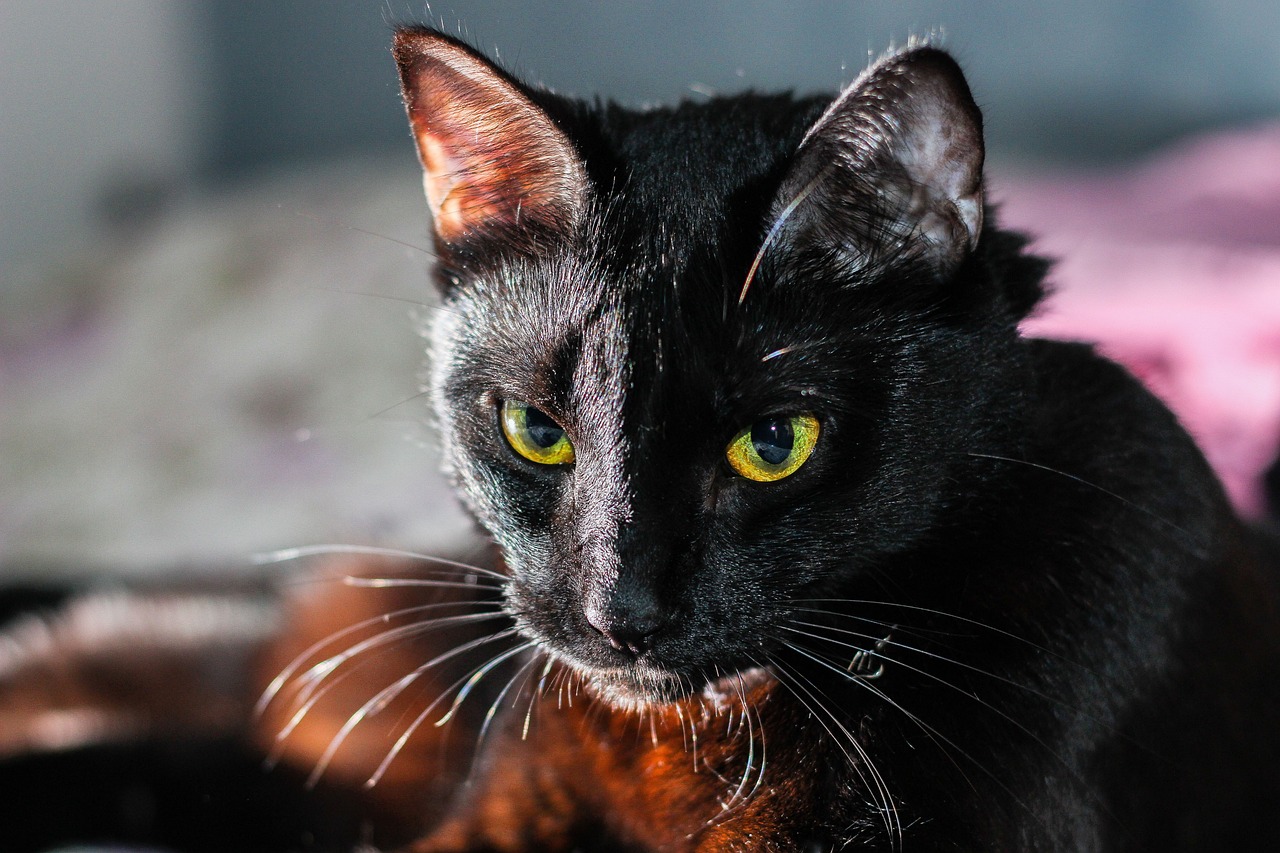
Establishing a Grooming Routine
Creating a consistent grooming schedule is not just a good idea; it's essential for maintaining your cat's coat and skin health. Think of grooming as a spa day for your feline friend—it’s a time for bonding and relaxation! Regular grooming sessions help your cat become accustomed to the process, making it less stressful for both of you. Just like you wouldn’t skip your own self-care routine, your cat deserves the same attention. Establishing a routine can also help you monitor any changes in your cat's skin or coat, which can be early indicators of health issues.
So, how do you go about establishing this grooming routine? Start by determining a frequency that works for both you and your cat. For instance, short-haired cats may only need grooming once a week, while long-haired breeds might require daily sessions to keep their fur tangle-free. The key is to find a schedule that fits into your lifestyle while also catering to your cat's needs. You might say, “But my cat hates being groomed!”—and that's where patience and practice come into play.
Make grooming a positive experience by incorporating it into your cat’s daily routine. Try to choose a time when your cat is calm, perhaps after a meal or a play session. During grooming, pay attention to your cat's body language. If they seem agitated or restless, it might be a sign to take a break. Remember, grooming should be a pleasant experience, not a chore. To make it even more enjoyable, consider using treats or toys as a reward for good behavior. This positive reinforcement can help your cat associate grooming with something enjoyable, making future sessions much smoother.
To further enhance your grooming routine, keep a grooming log. This can be as simple as a notebook where you jot down the dates and notes on your cat’s coat condition or any unusual findings. Keeping track of these details can help you stay on top of your cat's grooming needs and health. You can even create a simple table to organize this information:
| Date | Grooming Duration | Observations |
|---|---|---|
| MM/DD/YYYY | 15 minutes | No mats, slight shedding |
| MM/DD/YYYY | 20 minutes | Found a small lump |
In summary, establishing a grooming routine is all about consistency, patience, and positive reinforcement. By making grooming a regular part of your cat's life, you not only improve their physical health but also strengthen your bond. So grab those brushes, set a schedule, and turn grooming time into a delightful and rewarding experience for both you and your furry companion!
- How often should I groom my cat? - The frequency depends on your cat's coat type. Short-haired cats may need grooming once a week, while long-haired breeds may require daily attention.
- What tools do I need for grooming? - Essential tools include brushes, combs, and sometimes clippers for long-haired cats. Choose tools that are appropriate for your cat's coat type.
- What if my cat hates being groomed? - Start slow, use treats for positive reinforcement, and choose a calm time for grooming. Gradually increase session lengths as your cat becomes more comfortable.
Frequency of Grooming
Determining how often to groom your feline friend isn't a one-size-fits-all situation; it largely depends on their coat type and activity level. For instance, a short-haired cat may only need a quick grooming session once a week, while a long-haired cat might require daily attention to keep their luxurious fur free of tangles and mats. It's almost like a dance—finding the right rhythm that suits your cat's unique needs can make all the difference.
Regular grooming sessions serve multiple purposes, such as managing shedding, reducing hairballs, and keeping their coat looking its absolute best. If you think about it, grooming is akin to a spa day for your cat. It’s a time for bonding, relaxation, and a little pampering. Imagine how refreshing it feels to have your hair brushed after a long day; your cat feels the same way! So, how do you figure out the right frequency? Here’s a quick breakdown:
| Coat Type | Recommended Grooming Frequency |
|---|---|
| Short-Haired | Once a week |
| Medium-Haired | Every 1-2 days |
| Long-Haired | Daily |
Additionally, consider your cat's activity level. An active cat that loves to explore outdoors may pick up dirt and debris, necessitating more frequent grooming. On the other hand, a more sedentary cat might not require as much attention. Remember, the goal is to keep your cat comfortable and healthy, so pay attention to their cues. If they seem to be shedding more than usual or if their coat appears dull, it might be time to step up your grooming game.
Ultimately, establishing a grooming routine not only benefits your cat's coat but also builds trust between you two. Cats thrive on consistency, and knowing when to expect grooming can help alleviate any anxiety they may have about the process. So grab those grooming tools, and let the bonding begin!
- How often should I groom my cat? It depends on their coat type; short-haired cats usually need grooming once a week, while long-haired cats may need daily grooming.
- What tools do I need for grooming? The tools vary based on coat type, but generally, you will need brushes, combs, and possibly clippers for long-haired cats.
- Can grooming help with shedding? Yes, regular grooming helps remove loose hair and reduces shedding.
- How can I make grooming more enjoyable for my cat? Use positive reinforcement, such as treats, to create a positive association with grooming sessions.
Positive Reinforcement
When it comes to grooming your active feline friend, is a game-changer. Imagine your cat, a furry bundle of energy, suddenly becoming calm and cooperative during grooming sessions. Sounds like a dream, right? Well, with the right approach, it can be your reality! By using positive reinforcement, you can turn grooming from a dreaded chore into a delightful bonding experience for both you and your cat.
So, what exactly is positive reinforcement? It’s a technique that involves rewarding your cat for good behavior, encouraging them to repeat those actions in the future. This could be in the form of treats, praise, or even a favorite toy. For instance, if your cat sits still while you brush them, shower them with love and a tasty treat. This will not only make them associate grooming with something pleasant but will also help reduce their anxiety about the process.
To effectively implement positive reinforcement during grooming, consider the following tips:
- Start Slow: Don’t rush into a full grooming session. Begin with just a few strokes of the brush, then reward your cat. Gradually increase the duration as they become more comfortable.
- Use High-Value Treats: Find out what your cat loves the most—be it chicken, fish, or a special cat treat. Use these as rewards during grooming sessions.
- Be Patient: Every cat is different. Some may take longer to adjust to grooming than others. Patience is key!
By incorporating these techniques, you'll not only make grooming more enjoyable but also strengthen the bond between you and your cat. Remember, the goal is to create a positive atmosphere where your cat feels safe and secure. Each grooming session can become a moment of connection, filled with affection and trust.
Additionally, keep in mind that consistency is crucial. Try to maintain a regular grooming schedule, as this will help your cat anticipate the routine and look forward to it rather than dread it. Over time, your cat will learn that grooming is a part of their life, and they can trust you to handle them gently and lovingly.
In conclusion, positive reinforcement is not just a training tool; it's a way to enhance your relationship with your cat. By rewarding good behavior, you can make grooming a stress-free experience that benefits both you and your furry companion. So grab those brushes, sprinkle in some treats, and get ready for some quality bonding time!
1. How often should I groom my cat?
The frequency of grooming depends on your cat's coat type and activity level. Short-haired cats may need grooming once a week, while long-haired breeds might require daily attention to prevent mats and tangles.
2. What if my cat doesn't like being groomed?
If your cat resists grooming, try introducing it gradually. Use positive reinforcement, such as treats and praise, to help them associate grooming with positive experiences. Patience is key!
3. What tools should I use for grooming?
The tools you need depend on your cat's coat type. For short-haired cats, a bristle brush or rubber grooming mitt is effective, while long-haired cats benefit from a wide-toothed comb or a slicker brush to remove tangles.
4. Can grooming help with shedding?
Absolutely! Regular grooming helps remove loose hair and reduces shedding. It also distributes natural oils in your cat's coat, promoting a healthy shine.
5. Is it necessary to groom my cat if they are outdoors?
Yes, grooming is essential for outdoor cats too. They can pick up dirt, debris, and even parasites. Regular grooming helps maintain their hygiene and overall health.
Frequently Asked Questions
-
Why is grooming important for active cats?
Grooming is crucial for active cats as it helps maintain their skin and coat health. Regular grooming reduces shedding, prevents matting, and promotes better hygiene. Plus, it can be a bonding experience between you and your furry friend!
-
How often should I groom my cat?
The frequency of grooming depends on your cat's coat type and activity level. Generally, short-haired cats can be groomed once a week, while long-haired cats may need grooming several times a week to keep their coats tangle-free.
-
What tools do I need for grooming my cat?
Choosing the right tools is essential for effective grooming. For short-haired cats, a rubber brush or a grooming glove works well. Long-haired cats benefit from a wide-toothed comb and a slicker brush to manage tangles and mats.
-
Can grooming be a stressful experience for my cat?
Yes, grooming can be stressful for some cats, especially if they aren't used to it. To make it easier, establish a routine and use positive reinforcement, like treats or praise, to help them associate grooming with good experiences.
-
What should I do if my cat has mats in its fur?
If your cat has mats, it's important to address them carefully. Use a detangling spray or conditioner, and gently work through the mat with a comb. If the mat is too tight, consider seeking help from a professional groomer to avoid hurting your cat.
-
How can I tell if my cat enjoys grooming?
Pay attention to your cat's body language! If they purr, knead, or lean into the brush, they likely enjoy it. However, if they hiss, swat, or try to escape, it might be time to reassess your grooming technique or frequency.
-
Are there any health benefits to grooming my cat?
Absolutely! Regular grooming helps stimulate blood circulation, reduces the risk of skin infections, and allows you to check for any unusual lumps, bumps, or parasites. It’s a great way to keep your cat healthy and happy!








